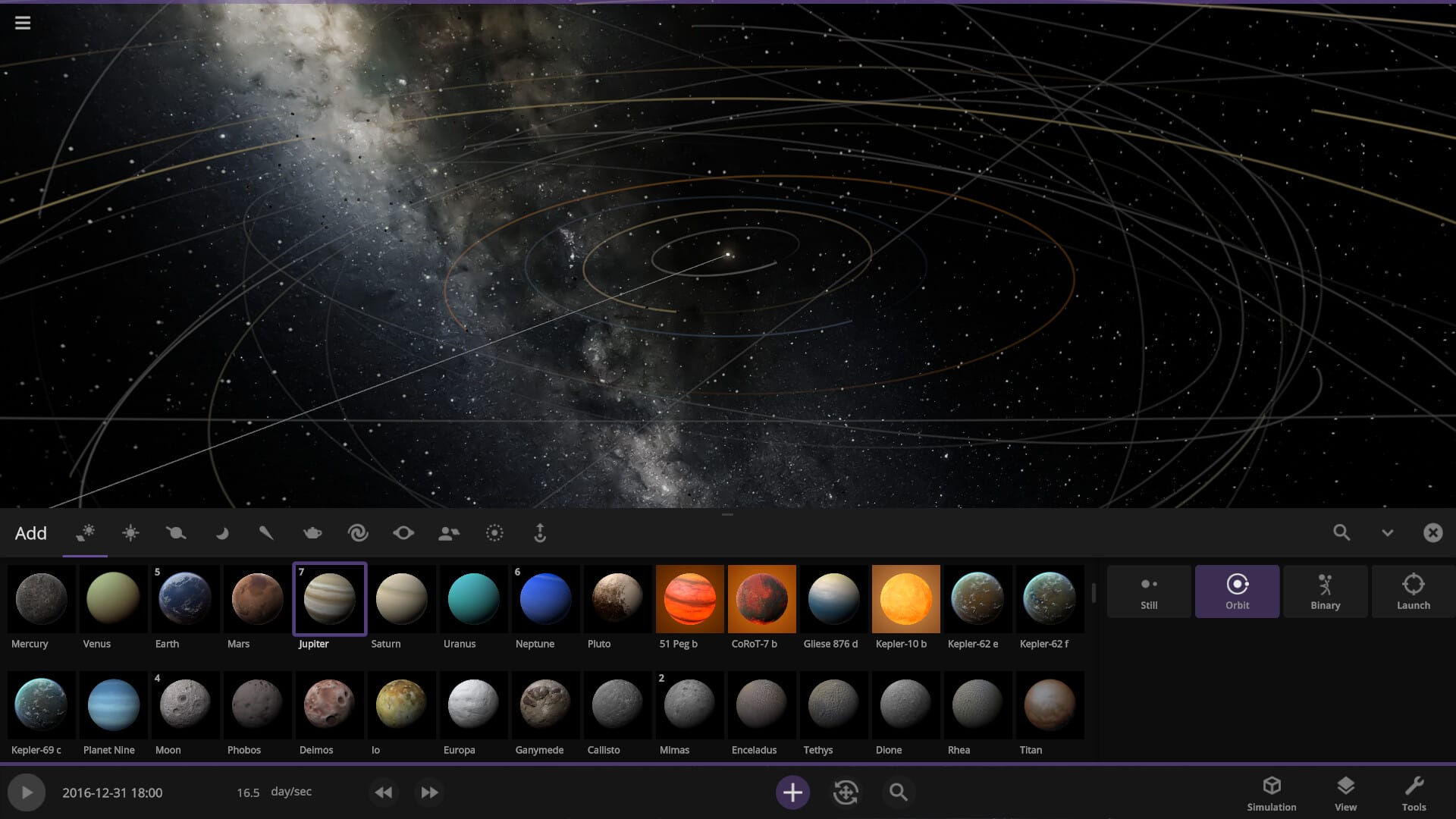Universe Sandbox is a physics-based space simulator that lets you manipulate the cosmos on a massive scale. Seamlessly combining scientifically grounded simulations with sandbox-style interactivity, the game allows you to create, destroy, or modify entire solar systems and galaxies using real astrophysical laws.
It’s not a traditional game with objectives or narratives—instead, Universe Sandbox is a tool for experimentation, exploration, and awe. You can watch planets collide, spin up black holes, simulate climate change on Earth, or just fling moons into the Sun to see what happens.
It’s often used by educators, astronomers, and science enthusiasts for its surprisingly accurate simulation of gravitational dynamics, planetary motion, and stellar evolution.

Core Simulation Features
Gravity and Orbital Mechanics
- Real-time Newtonian physics simulates gravity and inertia across thousands of celestial bodies.
- Watch how orbits shift over time, planets get captured or ejected, or moons form from debris.
Scale and Speed Control
- Zoom from planetary surfaces to galactic scale instantly.
- Pause, slow down, or accelerate time by factors of millions to observe fast or slow cosmic events.
Destruction and Creation
- Smash planets together and witness thermodynamic effects like surface heating, vaporization, and crater formation.
- Spawn stars, asteroids, or even rogue black holes with a click.
Climate and Atmosphere Simulation
- Tweak Earth’s atmosphere to simulate global warming, nuclear winter, or terraforming.
- See the effects of axial tilt, greenhouse gases, and orbital changes on planetary habitability.
Stellar Evolution
- Stars age, expand, and die based on realistic life cycles—watch a massive blue giant collapse into a neutron star or go supernova.
- White dwarfs, binary systems, and even hypothetical exotic stars can be modelled.
Interactive Tools
- Use lasers to heat up planets, “terraform” surfaces, or adjust their rotational spin.
- View orbits, velocities, masses, and other astrophysical data in real-time overlays.
Themes
Cosmic Scale and Perspective
- It conveys a profound sense of scale—how small we are in the grand scheme, and how fragile planets can be.
Creation and Destruction
- Offers a sandbox of ultimate power—users can simulate the birth of life or the annihilation of entire star systems.
Science and Education
- Explains complex astronomical phenomena visually, making it ideal for classrooms and armchair astrophysicists.
Speculation and Hypothesis
- Encourages scientific curiosity by letting users explore the consequences of hypothetical changes—what happens if Jupiter becomes a star? What if Earth had Saturn’s rings?
Visuals and Audio
While not graphically intense in a traditional sense, Universe Sandbox uses clean, data-rich visuals to illustrate orbits, heat maps, atmospheres, and stellar processes. Explosions and impacts are colourful, and planetary surfaces deform under stress.
The soundtrack and ambient sound design are minimalist but atmospheric, emphasising calm, awe, and contemplation over action.
Have you played Universe Sandbox? What’s your favourite part of it? We’d love to hear from you.
Other things you might want to know:
Can you get Universe Sandbox for free?
Universe Sandbox is not free. It is currently £16 on Steam.
Is Universe Sandbox worth it?
Universe Sandbox has been widely praised for its accessibility, scientific merit, and replayability. It’s seen use in educational institutions and gained a strong user base among science communicators and YouTubers.







